Introduction
Japanese Woodblock art has been increasing in popularity with collector’s paying eye-watering amounts at auction. These prints capture ephemeral moments from Japan’s rich cultural and historical tapestry. Beginners and seasoned collectors alike will benefit from understanding the essentials of acquiring and appreciating these artistic treasures. This guide offers eleven key insights to help you navigate the complexities of collecting Japanese woodblock art.
1. Understand the History
Japanese woodblock art, or ukiyo-e, captures a transformative period in Japan’s history, mirroring its cultural evolution from the 17th through the 19th centuries. Originating in the Edo period, ukiyo-e translates to “pictures of the floating world,” reflecting a fascination with the transient pleasures of life. The art form began with simple monochromatic designs and evolved into sophisticated multi-colored prints known as nishiki-e, depicting everything from daily life and landscapes to the supernatural.
For a deeper dive read our article: Evolution of Japanese Woodblock Art: Ukiyo-e, Shin-Hanga, and Sosaku-Hanga
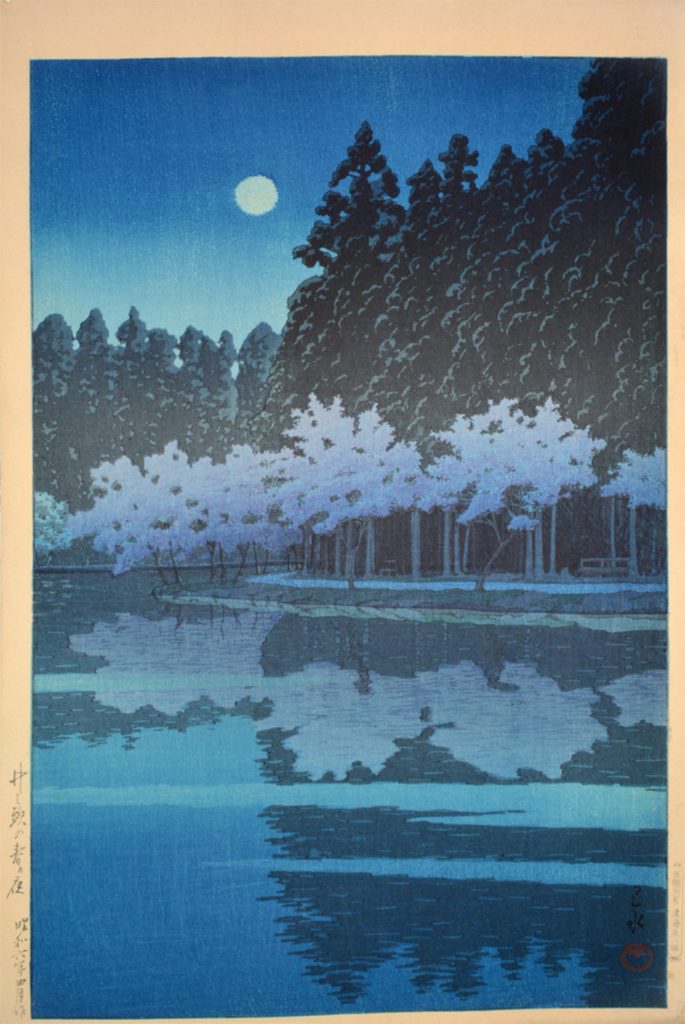
2. Recognize the Masters
Katsushika Hokusai and Utagawa Hiroshige are the titans of ukiyo-e, whose works have transcended cultural boundaries. Hokusai’s series “Thirty-six Views of Mount Fuji,” including the famous “The Great Wave off Kanagawa,” showcases dramatic landscapes with bold compositions and a fine use of color. Hiroshige’s “The Fifty-three Stations of the Tōkaidō” offers a picturesque sequence of landscapes along the Tōkaidō road, displaying a mastery of perspective and atmosphere. Their works profoundly influenced Western art, particularly the Impressionists. When collecting Japanese woodblock art, you should familiarize yourself with the 11 Most Influential Ukiyo-e Artists and the The 12 Most Important Ukiyo-e Artworks of All Time.
3. Appreciate the Craftsmanship
The creation of ukiyo-e involves multiple artisans: the designer, the carver, the printer, and the publisher. Each color in a print was applied using a separate hand-carved wooden block, a method requiring precision and skill. The finest prints show no overlap of colors, and the registration must be exact, making high-quality prints prized collectibles.
4. Identify Popular Themes
Ukiyo-e celebrated the beauty of the mundane and the accessible: beautiful courtesans (bijin-ga), genji-e, kabuki actors, sumo wrestlers, and scenes from everyday life were recurrent themes. Seasonal landscapes and famous places were also popular, reflecting a growing appreciation for travel and nature among the Japanese urban population. Prints like Hiroshige’s “Rain Shower at Atake” capture these elements with exquisite detail and emotional depth.
Read more about The Symbolism of Wildly Popular Japanese Woodblock Art.
Example: Utamaro’s bijin-ga prints, like “Three Beauties of the Present Day,” showcase the artist’s mastery in portraying subtle gradations of color and intricate patterns on fabric.
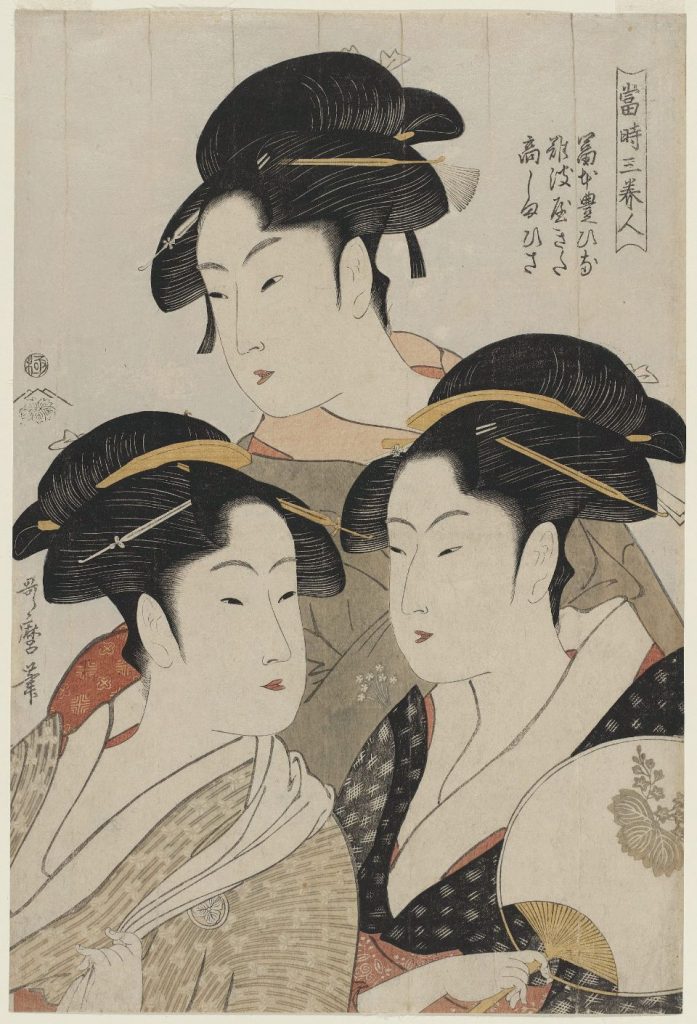
5. Check Condition
The condition of a print can greatly influence its value. Factors to check include the brightness of the colors (which can fade over time), the presence of any blemishes such as stains or tears, and any restoration work that may have been done. Collectors should seek prints with original color and minimal restoration to ensure the piece retains its value.
A rare well-preserved early edition listed under its full name of “Kanagawa oki nami ura (Under the well of the Great Wave off Kanagawa),” sold at a Christie’s auction in March 2023 for a record $2.76 million.
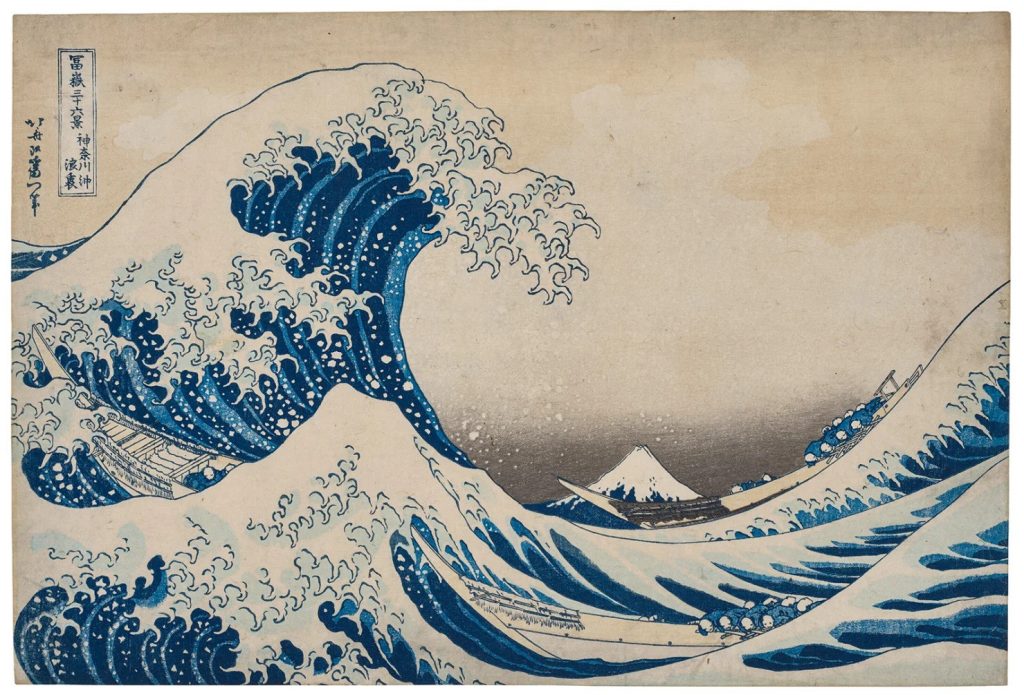
6. Notice the Signatures
A signature or seal (called a Hanko) from the artist (and often also the printer and publisher) is typically present on ukiyo-e prints and can be crucial for verification. Familiarizing yourself with the signatures and comparing them with known examples from museum collections or catalogues can aid in authenticating a print’s origin and ensuring its historical accuracy.
Example: Hiroshige’s “Tokaido Road” series often features the publisher Hoeido’s mark, signifying its role in bringing these prints to life.
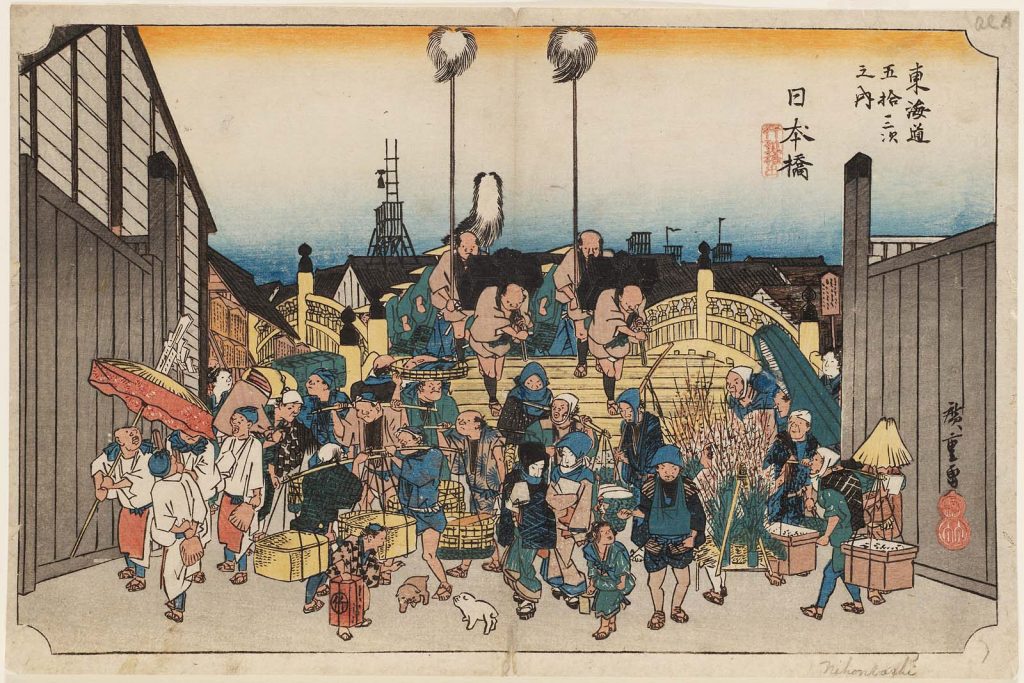
7. Learn About Rarity
Prints from certain artists, periods, previous ownership (provenance), or with particular subjects can be exceedingly rare and highly valued. For instance, early prints by major artists like Hokusai or Hiroshige, especially those in good condition, are extremely sought after at auctions. Christie’s reported significant auction prices for rare pieces, with some ukiyo-e prints fetching tens of thousands of dollars, highlighting their desirability and the importance of rarity.
Recently, a version of “Sudden Shower over Shin-Ohashi Bridge and Atake” by Utagawa Hiroshige was auctioned. Owned by the late Freddie Mercury, it was estimated to fetch up to £50,000. However, the piece exceeded all expectations by selling for an astonishing £292,100, a testament to its exceptional condition and rich historical significance.
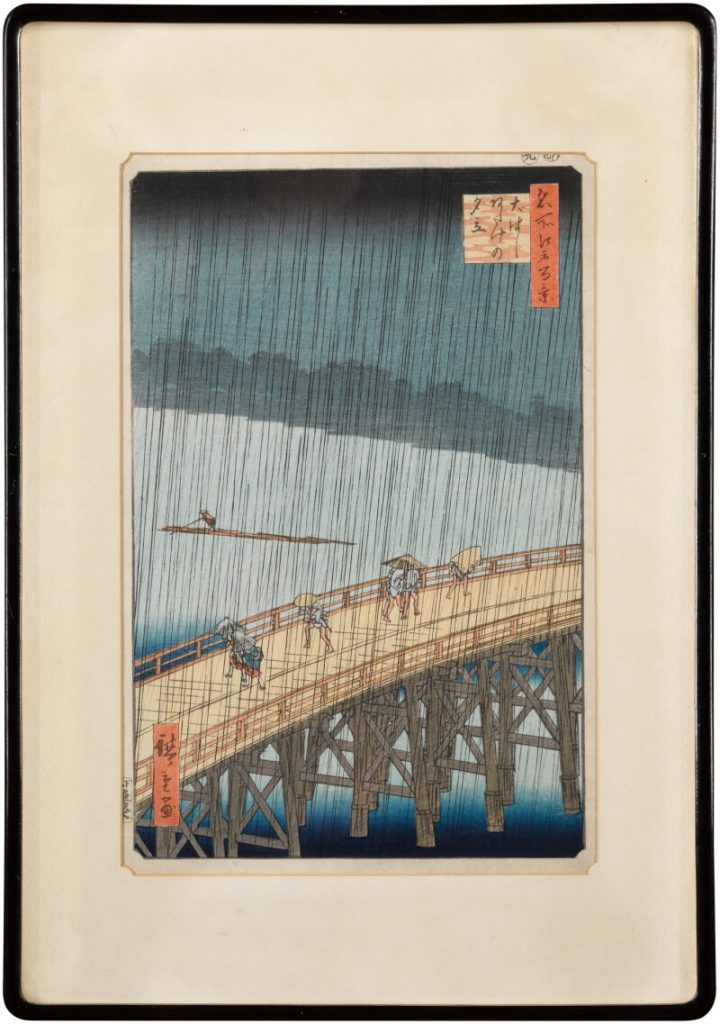
8. Consider the Impression Quality
The quality of the impression is a key determinant of a print’s value. Early impressions are made before the woodblock begins to wear down, resulting in sharper lines and more vibrant colors. These are typically more desirable than later impressions where the details can appear blurred and the colors muted.
Impressions are a critical assessment factor to consider when collecting Japanese woodblock art.
9. Be Aware of Reproductions
Identifying authentic prints versus modern reproductions is crucial. Originals are printed on handmade paper with specific textures and imperfections, while reproductions are often on more uniform material. Additionally, the quality of the ink and the aging process of the paper can help differentiate an original from a reproduction.
10. Explore Regional Styles
While most ukiyo-e originates from Edo (modern-day Tokyo), other regions like Osaka and Kyoto developed their own distinctive styles and subjects. Osaka prints, for instance, are known for their focus on kabuki theater and often feature more expressive figures and dramatic facial expressions. Understanding these regional differences can provide a broader perspective on the diversity of ukiyo-e art.
For example, Shunkōsai Hokushū was a prominent Japanese ukiyo-e artist active during the early 19th century. Known for his contributions to the Osaka style of woodblock prints, he specialized in yakusha-e, or kabuki actor prints. His work significantly influenced the Osaka style, noted for its bold lines and dramatic use of color, helping to define the distinctive aesthetic of this regional variation within the broader ukiyo-e tradition.
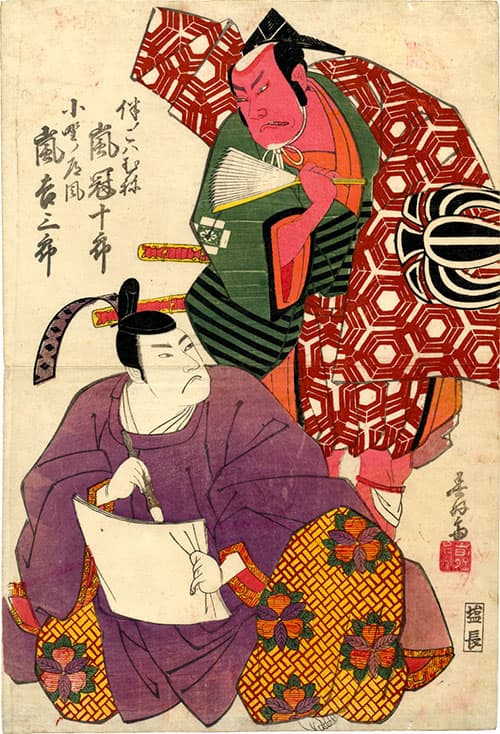
11. Join Collector Communities
Connecting with other collectors can provide invaluable insights and resources for both novice and experienced enthusiasts. Online forums, auctions, and collector clubs offer opportunities to see various prints firsthand, learn from experts, and even find rare pieces for purchase.
Collecting Japanese woodblock art is a deeply rewarding pursuit that offers insights into Japanese culture, history, and artistry. Whether it’s the bold, dynamic prints of Hokusai, the subtle beauty of Hiroshige’s landscapes, or the delicate details of Harunobu’s courtesans, each piece tells a story that is both a reflection of its time and a timeless work of art.
Read our ultimate guide: Collecting Ukiyo-e Art: A Guide for Beginners
Read more:
- Where Can I Buy Ukiyo-e Art? Here’s where to find those rare prints
- 9 Reasons for the Importance of Mount Fuji in Japanese Culture
- Mori Yuzan and Hamonshu: Japanese Wave Designs
- The Serenity of Circles: Exploring the Importance of Circles in Japanese Art and Culture

At the Art of Zen we have a selection of original Japanese art prints in the ukiyo-e and Japandi style. Some of our best selling work is Mount Fuji wall art and Japandi wall art.
Add some zen to your space with some art from the Art of Zen shop.
Featured image at top of The scene of Yadorigi from the Tale of Genji – Triptych by Kuniyoshi.
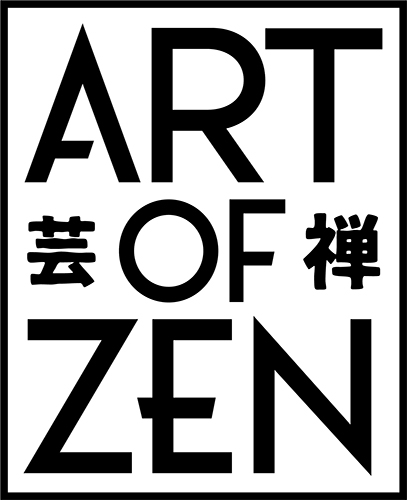
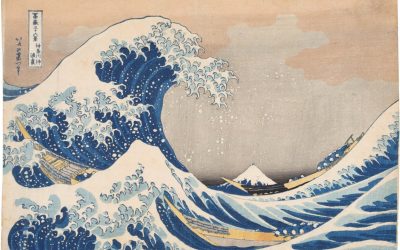
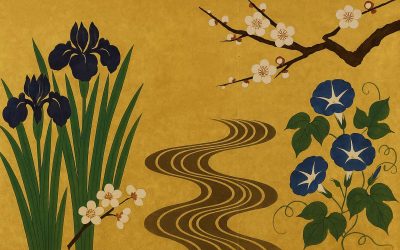

0 Comments